Tetra minor is an unpretentious aquarium fish that is often the first pet of beginner aquarists. This is due to the fact that a brisk creature is not demanding on maintenance, and even an inexperienced owner will cope with the care.


Features and Character
The homeland of the minor is considered South America. In nature, this fish prefers to settle in forest ponds in still water.
External characteristics have the following features:
- it is a small fish no more than 5 cm long;
- the body of the minor is high, slightly flattened laterally;
- An interesting difference between this is the dorsal vertical fin with four angles;
- a dark strip is observed across the body, the upper part of the fish is painted in an olive-brown shade, the lower part is bright red;
- dark spots are possible on the fins, the fin behind the gills is black in color, the rest of the body is colored red.
By nature, they are brisk, energetic fish who like to swim in the lower and middle layers of the aquarium more. These are flock creatures that feel comfortable only in a group, however, conflicts can arise within the flock for leadership between males. They also have a love of shelters, which should be considered when arranging an aquarium.
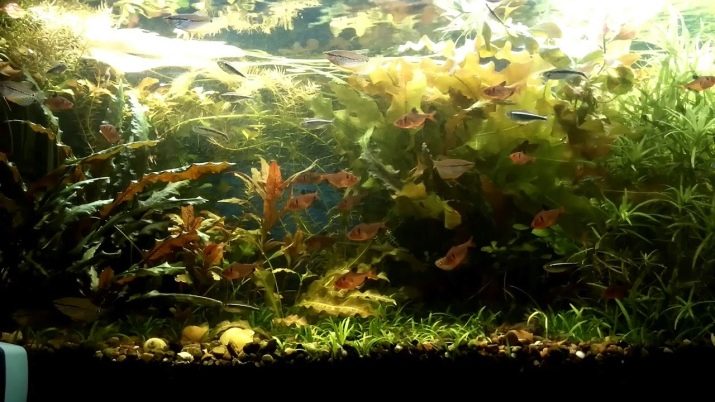
The subtleties of care
When keeping the minor, keep in mind that for each fish you will need 10 liters of water. Be sure to equip the aquarium with a lid, since behind these pets there is a peculiarity of jumping out of the aquarium. Fish like to hide in shelters, so it’s important to plant enough green space at the bottom, however leave the center of the aquarium empty - it will be a space for the free movement of fish. The most favorable plants are considered Javanese moss, echinodorus, Thai fern.
Optimal water temperature for minor - 25 degrees above zero, but a decrease in performance does not particularly affect the health of the fish. Recommended acidity 6.5-7, hardness 4-8. It is believed that minors feel good in peat water. For lighting, choose medium power lamps. Select sand or gravel of a dark color as the soil - against such a background, bright fish will look very harmonious. Do not forget to equip the aquarium with snags, grottoes, caves, even an old ceramic pot will serve as a good shelter.
Install a good filter in the tank, clean it in a timely manner. For large volumes, it is recommended to purchase external equipment - it does not need such frequent cleaning, while the internal filter needs to be cleaned 1-2 times a week. Get one aeration system, which will enrich the water with oxygen for a comfortable life of minors and aquarium plants.
Do not forget to measure 30% of water weekly; for this, use water that has settled for a day. Periodically clean the bottom with a siphon. Do not abuse too frequent a complete replacement of water, since the aquarium forms its microclimate and the world of beneficial bacteria, when changing which the aquarium inhabitants will feel uncomfortable.
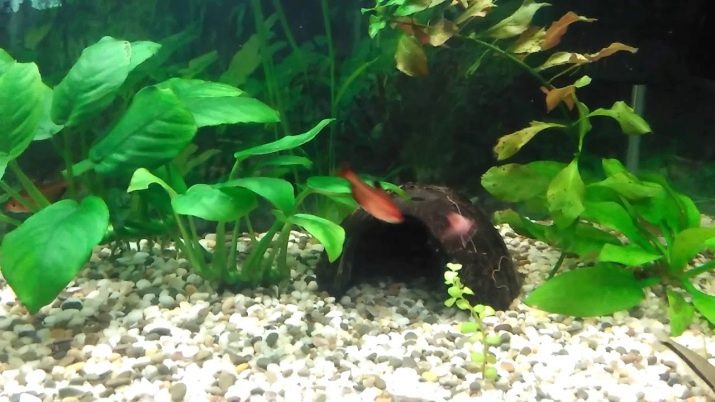
Feeding
These fish do not have special requirements for nutrition, but it is important for the owner to monitor their diet. In the natural environment, minors prefer to eat small animals in the water or grab insects that have fallen to the surface. The same live food is also suitable for captive feeding: crustaceans, small insects. In the aquarium It is customary to alternate live food with ready-made dry food. Buy dry feed small flakes and granules, since large fragments of the minors will not be able to swallow. Also do not forget about plant foods - dandelions, spinach, cinnamon.
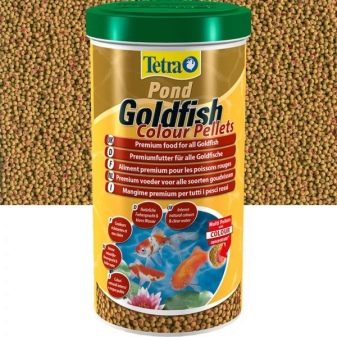

Compatibility with other types
The majority of aquarium inhabitants can be neighbors of minors, but these should be fish that are no smaller than them — very small fish will become an object of hunting for minors. Also, these creatures do not get along well with slow-moving fish with large fins - minors are attracted by iridescent veil fins, and they are not averse to tasting them. Therefore, try to settle minors with large and brisk fish. So, unfortunate neighbors for minors will be males or angelfish - creatures with such fragile fins will be prey for minors, and as a result, a gnawed fish will become ill or die.
The most suitable union is possible with the following types:
- zebrafish
- black neons;
- barbs
- ancistruses;
- other tetras.
Do not forget to start the flocks of minors, in the group they feel more comfortable, although they will not do without clarifying the relationship between the males. However, their fights are insignificant, that is, the fish do not cause each other serious injuries.
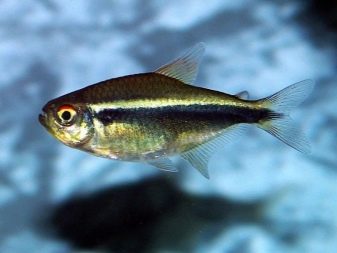
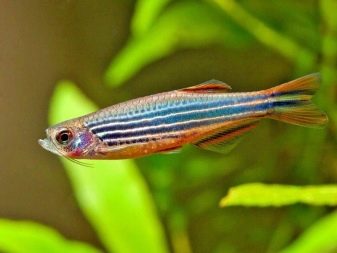
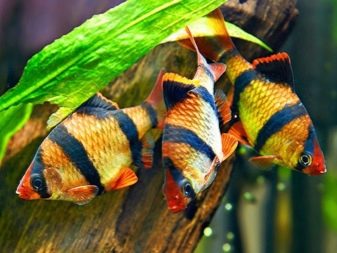
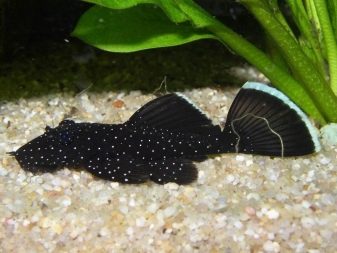
Breeding
Before breeding, it is important to determine which of the individuals is a female and which is a male. It is easiest to distinguish fish by sex before spawning. The males are colorful, more elegant body structure, their dorsal fin is completely painted black. The fin of females is more dull, moreover, they are always more well-fed. Minors multiply both in a group and in a pair. They become sexually mature at the age of 8-10 months.
For breeding, you need to prepare a spawning, for which you can use a small aquarium. As much as possible dim the lighting and plant small-leaved plants at the bottom. Usually, experts recommend planting Javanese moss.. Prepare water with a hardness of 6-8 dGH and an acidity of 6.0. The optimum water temperature for reproduction is 27 degrees.
Choose healthy producers.Before spawning, feed them well, especially do not skimp on live food. Spawning begins in the early morning, fish lay 200-300 eggs on prepared plants. After spawning, the parents are planted, and the spawning is rearranged in the shaded area, as the eggs are quite sensitive to light.
After a couple of days, the fry will hatch. First, they will feed on the yolk sac, sticking to the glass or leaves, and when they begin to swim (after 4-5 days), the feeding will fall on the shoulders of the owner. The first nutrition can be egg yolk and ciliates. Over time, the kids are transferred to nauplii artemia, rotifers, small nematodes. Once every two weeks, it is necessary to change the water in the spawning, gradually increasing its hardness. Further, it is customary to care for fry in the same way as for adults.
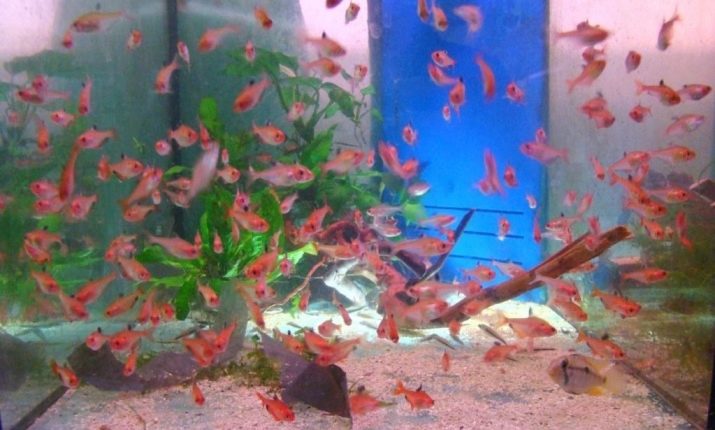
Next, watch a video review with tips on keeping fish in Tetra minor.










